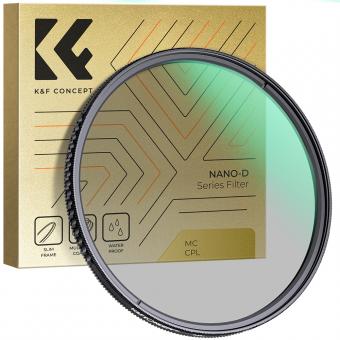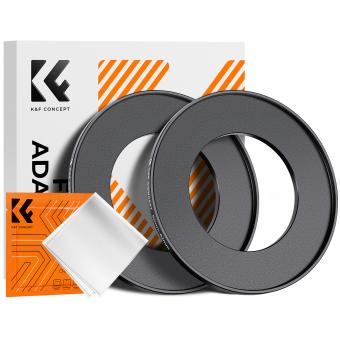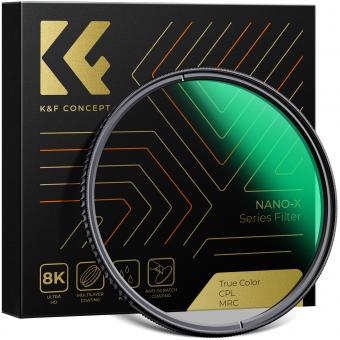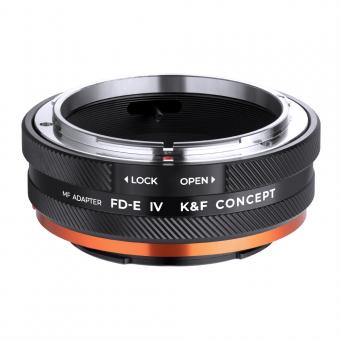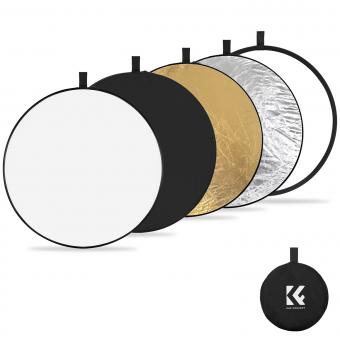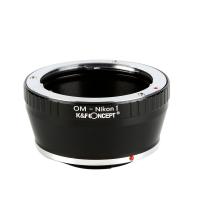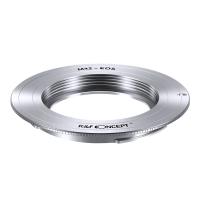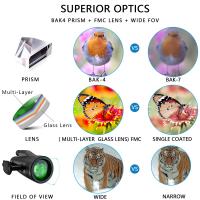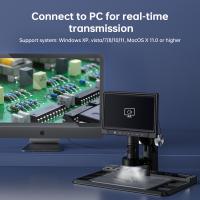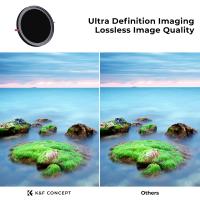Endoscopes Are Sterilized By ?
various methods such as chemical disinfection, high-level disinfection, and sterilization using ethylene oxide gas or hydrogen peroxide gas plasma. The method used depends on the type of endoscope and the manufacturer's instructions. Chemical disinfection involves soaking the endoscope in a high-level disinfectant solution for a specific amount of time. High-level disinfection uses a combination of chemicals and physical processes to kill microorganisms. Sterilization using ethylene oxide gas or hydrogen peroxide gas plasma is a more rigorous process that completely eliminates all microorganisms, including spores. The choice of sterilization method depends on the type of endoscope and the level of disinfection required. Proper sterilization of endoscopes is critical to prevent the transmission of infectious diseases between patients.
1、 Chemical disinfection
Endoscopes are sterilized by chemical disinfection. This process involves the use of high-level disinfectants, such as glutaraldehyde, hydrogen peroxide, and peracetic acid, to kill all microorganisms on the surface of the endoscope. The disinfectant is applied to the endoscope and left for a specific amount of time, depending on the type of disinfectant used and the manufacturer's instructions. After the disinfection process is complete, the endoscope is rinsed with sterile water to remove any residual disinfectant.
Recent studies have shown that the use of automated endoscope reprocessors (AERs) can improve the effectiveness of chemical disinfection. AERs are machines that automate the process of cleaning and disinfecting endoscopes, reducing the risk of human error and ensuring that the endoscope is properly disinfected. AERs also provide a standardized process for disinfection, which can improve the consistency and reliability of the disinfection process.
However, it is important to note that chemical disinfection may not be effective against all microorganisms, such as prions, which are responsible for diseases like Creutzfeldt-Jakob disease. In these cases, sterilization using methods like steam sterilization or ethylene oxide gas sterilization may be necessary.
In conclusion, chemical disinfection is the primary method used to sterilize endoscopes. The use of AERs can improve the effectiveness of this process, but it is important to consider other sterilization methods in cases where chemical disinfection may not be effective.
2、 High-level disinfection
Endoscopes are sterilized by high-level disinfection. This process involves the use of chemical agents that are capable of killing all microorganisms, including bacteria, viruses, and fungi. High-level disinfection is the preferred method for sterilizing endoscopes because it is effective and relatively easy to perform.
The process of high-level disinfection involves several steps. First, the endoscope is cleaned to remove any debris or organic material that may be present. This is typically done using a detergent solution and a brush. Once the endoscope is clean, it is rinsed with water and then placed in a high-level disinfectant solution. The endoscope is then left in the solution for a specified period of time, typically between 20 and 30 minutes. After the disinfection process is complete, the endoscope is rinsed with sterile water and then dried.
Recent studies have shown that high-level disinfection is effective in killing all microorganisms on endoscopes, including those that are resistant to antibiotics. However, there is still a risk of infection associated with endoscopy procedures, particularly if the endoscope is not properly cleaned and disinfected. To minimize this risk, healthcare facilities must follow strict protocols for cleaning and disinfecting endoscopes, and must ensure that all staff members are properly trained in these procedures.
In conclusion, high-level disinfection is the preferred method for sterilizing endoscopes. This process is effective in killing all microorganisms, including those that are resistant to antibiotics. However, healthcare facilities must follow strict protocols for cleaning and disinfecting endoscopes to minimize the risk of infection.
3、 Sterilization with ethylene oxide gas
Endoscopes are sterilized by various methods, but one of the most common methods is sterilization with ethylene oxide gas. Ethylene oxide gas is a potent sterilizing agent that can penetrate the narrow channels and crevices of endoscopes, ensuring that all surfaces are thoroughly sterilized.
The process of sterilization with ethylene oxide gas involves placing the endoscope in a sealed chamber and exposing it to the gas for a specific period of time. The gas penetrates the endoscope and kills any microorganisms that may be present. After the sterilization process is complete, the endoscope is aerated to remove any residual gas.
While ethylene oxide gas is an effective sterilizing agent, it is also potentially hazardous to human health. Exposure to high levels of ethylene oxide gas can cause respiratory irritation, headaches, and nausea. As a result, strict safety protocols must be followed when using this method of sterilization.
In recent years, there has been growing concern about the potential for endoscopes to transmit infections, even after they have been sterilized. This has led to increased scrutiny of the sterilization methods used for endoscopes, and the development of new technologies and protocols to ensure that endoscopes are thoroughly sterilized and safe for use.
4、 Sterilization with hydrogen peroxide gas plasma
Endoscopes are sterilized by various methods, but one of the most effective and widely used methods is sterilization with hydrogen peroxide gas plasma. This method involves exposing the endoscope to a low-temperature plasma of hydrogen peroxide gas, which effectively kills all microorganisms on the surface of the endoscope.
Hydrogen peroxide gas plasma sterilization is a highly effective method of sterilization because it is able to penetrate even the smallest crevices and channels of the endoscope, ensuring that all surfaces are thoroughly sterilized. Additionally, this method is safe for the endoscope and does not cause any damage or corrosion to the instrument.
Recent studies have shown that hydrogen peroxide gas plasma sterilization is also effective against highly resistant microorganisms such as Clostridium difficile and Mycobacterium tuberculosis. This is particularly important in healthcare settings where these types of microorganisms can pose a significant risk to patients.
However, it is important to note that proper cleaning and disinfection of the endoscope prior to sterilization is also crucial in preventing the spread of infection. Endoscopes should be thoroughly cleaned and disinfected using approved methods before being sterilized with hydrogen peroxide gas plasma or any other method.
In conclusion, sterilization with hydrogen peroxide gas plasma is a highly effective and safe method of sterilizing endoscopes. However, it should be used in conjunction with proper cleaning and disinfection practices to ensure the highest level of patient safety.


